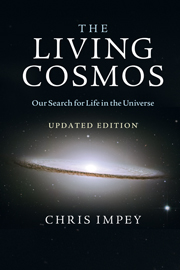7 - ARE WE ALONE?
Published online by Cambridge University Press: 05 August 2011
Summary
Sometimes I think we're alone. Sometimes I think we're not. In either case, the thought is staggering.
–Buckminster Fuller, architect, designer, and visionaryIf Earth's future space travelers came to this place, they would declare it a godforsaken wilderness. A trackless vista of cliffs and escarpments stretches to the horizon. Brown rock scorches under twin giant suns in a blood-red sky. The air is a thin gruel of sulfur dioxide, methane, and nitrogen. But there's more here than meets the eye. In the pore space of the rocks, something is stirring.
At a boundary layer with the deep mantle, mildly acidic water bubbles through the rock, driven by heat and pressure from the interior. Miles underground, microbes thrive in a rich brew of organics and dissolved minerals. They move by sensing magnetic fields and temperature gradients. Huge colonies begin to differentiate their functions and metabolisms to better use the available resources. Symbiotic behavior emerges.
In the course of ceaseless and random genetic variation, some organisms develop the ability to vibrate their outer membranes and sense when it is perturbed. The timing of a return ultrasound wave acts as a primitive proximity sensor. This brand of microbes maintains the spacing to garner more resources, so it rapidly dominates the colony.
As the strategy becomes more successful, the organisms with the most powerful emission or most sensitive reception must deal with a cacophony of ultrasound signals.
- Type
- Chapter
- Information
- The Living CosmosOur Search for Life in the Universe, pp. 264 - 310Publisher: Cambridge University PressPrint publication year: 2011



